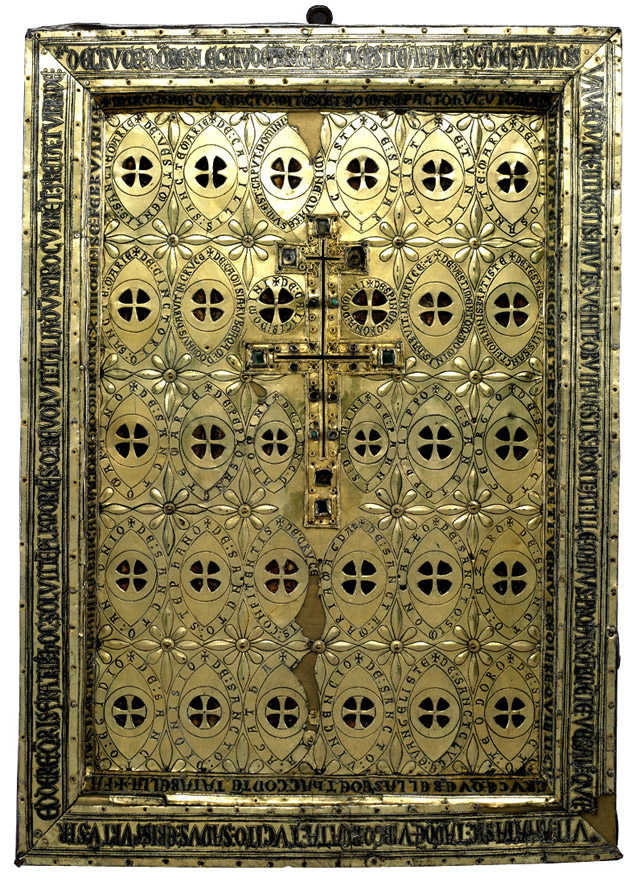Panel-shaped Reliquary of the True Cross
The Cleveland Museum of Art, purchase from the J. H. Wade Fund

 Select the image to zoom
Select the image to zoom
This panel-shaped reliquary follows a format commonly associated with Byzantine staurothekai, or reliquaries of the True Cross. Soon after the Crusader conquest of Constantinople in 1204, which resulted in the transfer of a number of distinguished Byzantine reliquaries of this type, Western artists—especially in the Rhine-Meuse region—started to adopt such Byzantine reliquary formats for their own purposes, thus fusing Eastern and Western metalworking techniques and traditions.
The Cleveland reliquary is one of the most striking examples of such an artistic fusion. A lengthy Latin inscription, executed in niello, frames the reliquary's central panel in two layers on all four sides. It records the colorful history of the translation of the relic of the True Cross, displayed prominently at the reliquary's center. While the inscription itself does not reveal where and under what circumstances the cleric named in the translatio account stole the relic, the design of the silver-gilt, double-arm cross— which is, in fact, only the front face of a reliquary cross—points toward the Latin Kingdom of Jerusalem as its place of origin. Likewise unknown is the exact location where the panel-shaped reliquary with its thirty additional relics of Christ, the Virgin, John the Baptist and other important saints and martyrs was manufactured. The overall arrangement of these additional relics around the double-arm cross relic as well as the placement of the framing inscription seems to indicate a knowledge of the famous Byzantine staurotheke that Henry of Ulmen brought back with him to the Rhineland from Constantinople in 1207 (now in the cathedral treasury of Limburg an der Lahn), where it served as a highly influential model for local goldsmiths for several decades.




